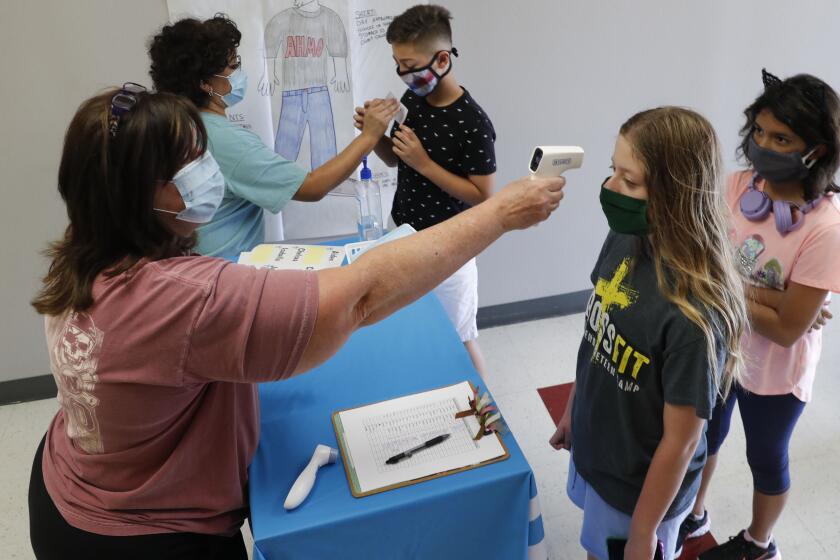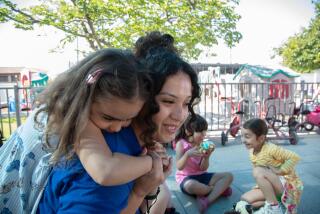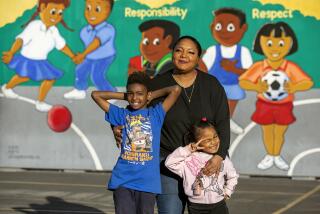Parents rush to hire tutors and create learning pods. But not everyone has options
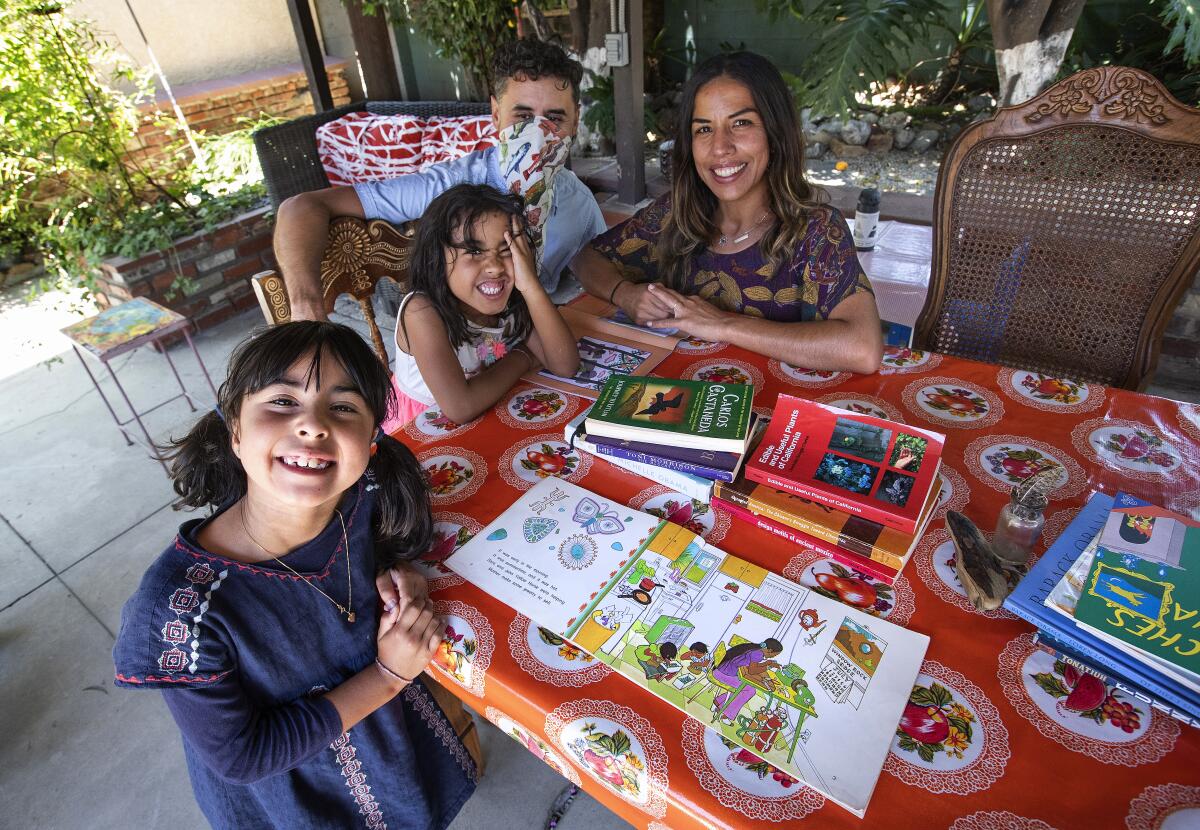
- Share via
The advertisements started popping up on social media almost immediately after Los Angeles Unified School District said campuses would remain closed for the start of the school year due to the COVID-19 pandemic.
“We’re looking for a TA/College student to help with LAUSD’s virtual learning for the new school year. Parents are WFH. Kids are 5th, 3rd and potentially K. We’re starting a learning pod with another family. Any TA’s on the westside ... looking for work?”
“ISO: Teacher/Tutor for 2nd grader and a little Kinder if possible. Would be open to hosting a very small pod in our back yard.”
“I am looking for a TA or tutor to help facilitate remote learning with my twin 1st graders and my 5th grader. I am thinking 3-4 hours a day, 4-5 days a week... Added perk, I am a really good baker.”
With most schools across California closed for the foreseeable future, families with financial resources are rushing to hire tutors and teachers to augment distance learning with children individually or in small groups in their spacious backyards or homes, creating an overnight coronavirus cottage industry: “learning pods.”
Such cohorts of families, neighbors or classmates are a consequence of parents who must fully get back to work and can no longer take on schooling and the pressure of supervising online learning alone. Instead, they are reimagining education on their own terms to keep their children on track academically and socially.
Here’s what scientists know about kids’ potential to spread the coronavirus and the risks of sending them back to school amid the COVID-19 pandemic.
Displeased with the quality of her son’s distance learning at Millikan Middle School in Sherman Oaks, Maryam Qudrat, a professor at Cal State Long Beach and co-founder of the group Concerned Parents L.A., said she is considering pooling resources with parents to get kids together and hire teachers.
Fabielle Covington, a stay-at-home mom in Castaic, is looking to hire a tutor for her son, who is entering the second grade. “The whole Zoom thing did not work for us,” she said.
But these accelerated moves could further exacerbate the equity gap among rich and poor students, some education researchers say. Underserved Latino and Black students, those without full digital access, English learners and those with disabilities will be left even farther behind.
In addition, low-income, Latino and Black families are disproportionately suffering from COVID-19 infection. Students in those communities are less likely to have a household environment conducive to learning pods, and some parents say they are fearful of letting outsiders into their homes.
But students learning in person with a teacher “are getting the social and emotional development of being together physically — and safely, hopefully — that in isolation children are not getting,” said UC Berkeley education and African American studies professor Janelle Scott.
Education officials recommend against podding.
“In-person ‘pods’ do not align with current Public Health directives against gatherings with people who are not part of your household,” L.A. County Office of Education spokeswoman Margo Minecki said.
What do pods look like?
Although some families and students have adjusted well to online learning, the learning pod movement is gaining traction.
Since L.A. Unified shut down, retired teacher Julie Kohner, who advertised her services on Nextdoor, has received five to 10 calls a day from parents, she said. Families, many with kindergarten or first-grade children, have asked for individual tutoring or in pods of five to six children, who would meet in one of their backyards or in Kohner’s Bel-Air backyard, which she said is set up with 6-foot tables. All would wear masks, she said.
Kohner plans to use schools’ existing distance-learning curriculum — students would remain enrolled in their schools — and expand on it with math, spelling, writing, English, storytelling, art and music. Her one-on-one tutoring rate is $60 an hour. But pod teaching is a new concept — she’s still working that rate out.
While the tutoring industry is well-established, companies are pivoting to meet the “pod” demand, said Roman Slavinsky, owner and chief executive of A+ Tutoring.
He compares outdoor tutoring to outdoor dining, with kids socially distanced and teachers “hovering.” His company’s pod services, which will begin Aug. 1, aim to supplement and build on schools’ Zoom learning. In one likely scenario, he said, after morning distance learning from the child’s current school, the pod would meet at a house with a teacher to work with students to master concepts, ensure homework gets done and provide enrichment activities such as art projects.
Slavinksy said he is offering “early bird” pricing for the pods ranging from $20 to $55 per kid per hour. Based in the San Fernando Valley, he is fielding requests from Studio City, Sherman Oaks, Brentwood and Santa Monica. Nonprofits also pay the company to provide some tutoring for students who cannot afford it, including foster youth.
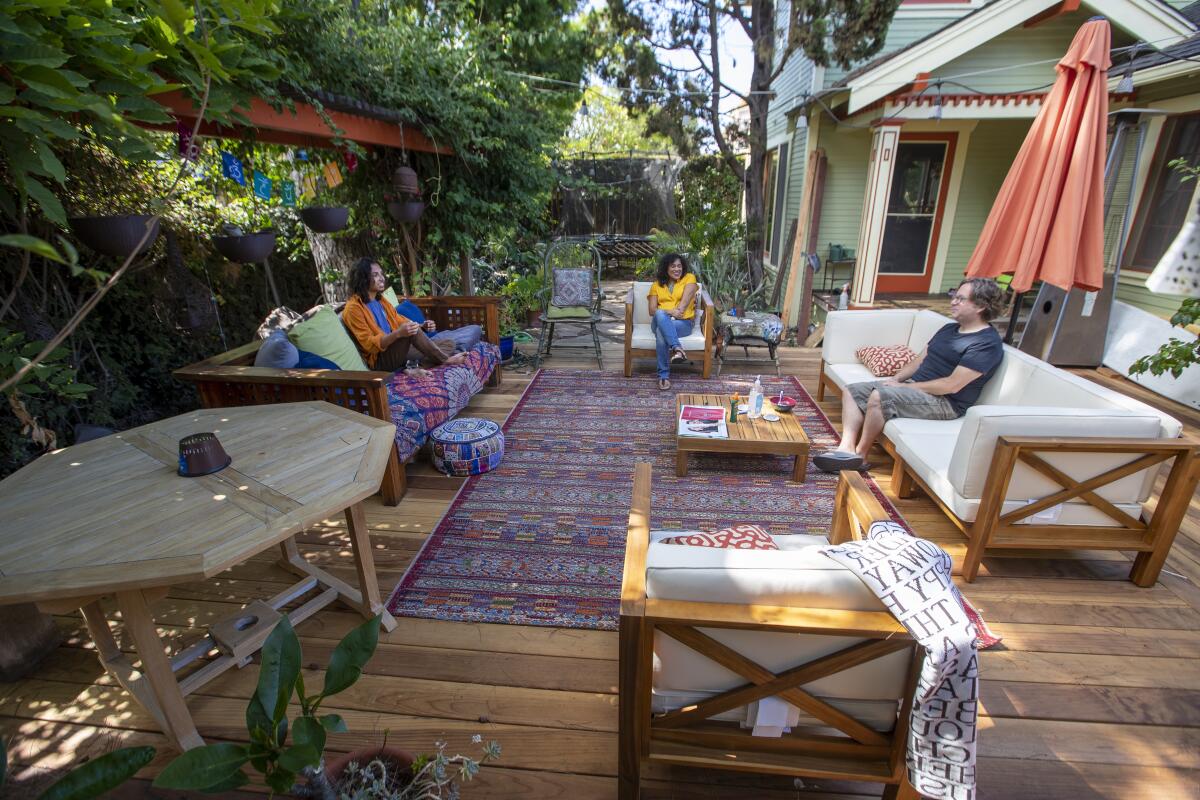
When the closures began in March, Rhea Nandi Stewart and her family revamped their Long Beach backyard and added a new sofa set to create a space for social-distanced visits and group work for their high school-aged son and daughter. She opened her home to three other teenagers — neighbors and close friends of her children — whose parents have essential jobs during the day.
“We made a decision to open it up mainly for the mental health of our kids, and I think ... it’ll help them be motivated” to actually do schoolwork, she said. “We took a calculated risk. But to isolate my children and to have them on TikTok and Snapchat all day long without seeing their friends, it just didn’t make sense anymore.”
‘I haven’t been able to do that’
But not everyone has a backyard, nor the money to hire a tutor or teacher.
“I haven’t been able to do that because most of my friends, they don’t want that physical contact,” said Maria Thalia Carmona, whose two children attend Lillian Street Elementary School in South L.A.
“We’re mostly working class, and we go to factories and we take the bus,” Carmona said. “[We] encounter more interaction with other people and more surfaces.”
Julia Ortiz and her three children — ages 18, 17 and 10 — all sleep on inflatable mattresses in her parents’ Boyle Heights home. During school days one child works from the living room, one from the kitchen and one from Grandma’s room. It’s difficult to sustain, and her 10-year-old son is losing interest in school and falling farther behind.
The nonprofit Communities in Schools of Los Angeles, which provides dropout prevention and other services for about 1,000 families in L.A., is working to find and pay for a tutor who would help Ortiz’s son remotely, said executive director Elmer Roldan. The organization is surveying its families to gauge the need for tutors, and collecting donations.
But unlike private agreements among families, the organization will comply with social distancing guidelines and can’t fund in-person tutoring or pods.
In addition, some families, including the Ortiz’s, do not feel comfortable allowing non-household visitors into their home. “We’re not going to know exactly where they’ve been,” Ortiz said. “I do not want to expose my kids to any of that.”
These disparate circumstances could have a major impact on educational inequities, many advocates say.
“Schools are going to have to recognize that the learning gaps are going to get bigger ... because the kids who are getting connected and who are logging on are going to be much more prepared,” UCLA education professor Tyrone Howard said. Add to that the benefits of in-person interaction and tutoring, and the advantage is compounded.
California Gov. Gavin Newsom said Wednesday that the state is working on closing the digital divide between families, but that there is much work to be done. He applauded parents who are sharing “best practices, not just pain and struggles and suffering,” with one another online.
Families who rely on schools to provide aid for their children with disabilities face a double challenge. Bell mother Joana Rico Carbajal’s son is supposed to receive speech therapy, but is not getting that treatment remotely. She worries, yet is still most comfortable with remote learning for her children.
In some schools parents are trying to plan for learning that will help all students.
Parents in Highland Park send messages about parent-organized Zoom sessions such as cooking, yoga and Friday dance parties via email and share resources on Facebook, in English and Spanish, said incoming Aldama Elementary Parent Teacher Assn. Vice President Kamren Curiel, who stays home with her daughters, ages 6 and 5, while her husband works as a doctor.
“It’s not going to be easy and we’re not going to be great at it,” Curiel said. But for parents who are front-line workers or who do not speak English, “it’s going to fall on the kids.”
- Share via
Watch LA Times Today at 7 PM/10PM on channel 1 on Spectrum News 1, and on Cox systems in Palos Verdes and Orange County on channel 99.
Staff writer Howard Blume contributed to this report.
More to Read
Sign up for Essential California
The most important California stories and recommendations in your inbox every morning.
You may occasionally receive promotional content from the Los Angeles Times.
